Martial arts equipment: Is Japanese craftsmanship in danger?
What does "Made in Japan" means nowadays?
Ed: This article was initially published in 2015, prices have been updated to their current value.
In the last 5 years, I have seen a dozen Japanese workshops close down, stop or slow down production, but there are undoubtedly many more. I can certify that at least 2 traditional sewing/weaving techniques have died out and will probably never be seen again. Four workshops for Bokken manufacture, three for Iaito, a dozen for the production of Hakama (of those only 3 or 4 still master their original technique), 4 companies able to manufacture bleached cloth for dogi (more workshops manufacture the clothing but not the materials), a dozen workshops for karategi and black belts manufacture, a few dozens with the know-how required to make Kendo armors, etc. All for more than 3 millions of practitioners in Japan, likely more than 10 millions worldwide. It is easy to see that, in any case, it is impossible for Japan to sustain even 10% of the worldwide demand for this kind of equipment. In reality, even if it was tunnel-focused on its own market alone, Japan would only be able to supply 20% to 30% of the market. So, what is Made in Japan, and what isn’t? Let’s try to answer.

One of the few young people in the sector, at Minosaka Workshop
"Made in Japan" according to the WTO
"Are considered 'made in Japan' products whose last significant transformation step took place in Japan". A bit hazy isn’t it? So, effectively, how does it all work?
Far be it from me to blame my own industry, but here are a few examples of what some companies in the business (as well as Japanese law) consider to be "Made in Japan".
- Kendo gloves made in China and whose laces have been manufactured and then added in Japan.
- Dogi imported unbleached from China and then bleached in Japan.
- Hakama made in China or Vietnam but whose folds have been sewn in Japan.
Evidently we are not talking about products including some imported parts here, but rather products who have been 99% made in a foreign country.
And of course, we can add to this the very long list of products whose parts are all made in China or elsewhere and that are only assembled in Japan.
Do brands know what they’re selling?
Here we have to make a distinction between two kinds of "brands": those who manufacture themselves, and thus are fully aware of their products’ origin, and those who resale hardware that they have not made themselves. And in the end, the brand is the final seal of quality. How does a brand quality-controls? What are their quality standards?
Through my experience and in all honesty, we have tried selling this kind of 99% made in China hardware on Seido/BudoExport, as Made in Japan. And we did get duped back in our early days. It is, in fact, what motivated us to intensify our work of research and control, and, today, inspired the writing of the article you’re reading.
All of our work nowadays consists in thoroughly verifying the provenance of everything that we sell. We travel on site, control the origin of the materials used, and the manufacturing process. We consider "Made in Japan" a product whose fabrication is entirely made in Japan, and "100% Made in Japan" products whose materials are of Japanese origin.
- A sleeve whose cloth is cut and sewn in Japan is "Made in Japan".
- A dogi that is cut and sewn in Japan from a cloth that is woven in Japan is "100% Made in Japan".
Sadly, this does not match the WTO definition.
There are mainly 3 kinds of businesses. Those who want to make true "Made in Japan" products, and try hard to achieve that goal. Those, and probably the most common, who want to make true "Made in Japan" products, but do not put in the extra work required to get there and thus have no clue what is on their shelves. And finally, those who knowingly sell products assembled in Japan at prices more or less in line with the real origin of their product. Those belonging to the third category are relatively easy to spot due to the cheer volume of their sales, considering the current low production output in Japan.

KuSakura, one of the most virtuous major companies in the industry.
The case of french imports
France, where martial arts have been established for a very long time now, boasts the highest number of Japanese equipment importers in the world. Sadly, investigating the origins of the products we sell is even harder from France.
The concept of resale
First of all, there aren’t that many martial arts equipment manufacturers in Japan. 4 workshops for wooden weapons (ed: in 2020, only 3 remain), 4 workshops that master the manufacturing of Sashiko fabric (Dogi) and thus the production of Dogi, 2 manufacturers of traditional Aikido Hakama, etc. This means that most of the products you buy that are truly made in Japan often come from the same workshops. Sometimes those products are entirely identical and sometimes slightly different, but the quality itself remains the same. Not many professionals know about this, but most importantly, long-established workshops are pledged, through oral or written agreement, to limit the number of companies they work with. And indeed, many French resellers are actually the 3rd, 4th or even the 5th link of the chain, which explains why prices are so exorbitant.
Now picture a product initially made in China, and then resold to a Japanese importer. The Japanese importer resells that product to the brand that ordered it and who will then slap their logo and pass it on to a French retailer through a third party broker. So we end up with a manufacturer > an importer > a brand > a broker > and the end consumer: 5 actors, 5 markups. A 3000 yen Hakama is sold by the importer to the brand for 5000, who will then resell them for 9000 (or more) to a broker who will mark them up for 1000 yen. Back in France, the importing store will have to pay 10000 yen (not including VAT), plus at least 1000 yen for shipping (wholesale), will apply a 30 to 50% markup reaching 20000 yen, plus 20% VAT to end up with a final price of 24000 yen or 200€, for an item made in China that was originally sold 20 to 25€ by its manufacturer.
If the Japanese brand that initially ordered the product is a bit more knowledgeable than a French brand doing all the hard work by themselves, in all honesty, wouldn’t it be better to buy a 40€ Hakama from a French sport retail store? They probably come from the same place, and are similar in quality.
Here are one of the founding principles of Seido: to cut down the number of intermediaries in order to cut down costs. As of today, all products sold under the Seido seal come straight from Japanese craftsmanship, with no in-between.
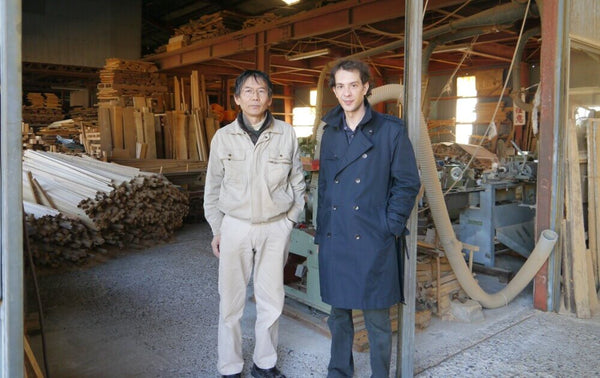
Myself, Jordy Delage, at the Horinouchi workshop, with Master Horinouchi
As a customer, how can I know?
Sadly, there isn’t any solution. It is quite hard, even for us professionals of the sector, to be absolutely sure that all our products are 100% Made in Japan (hard, but not impossible, seeing as we're able to!), so knowing every single product from every single brand is clearly impossible. And even for those that we know of (a significant number of them, actually), we cannot publicly expose their wrongdoing since it could be considered libel from a legal standpoint. All you can do is contact us privately and we will answer to the extent of our knowledge. There is nothing more we can do.
Is pricing the only reliable indicator?
We have already shown that 'expensive' isn't a synonym of quality, and even less of Made in Japan. So, how can price help us? It certainly allows us to discard the cheapest pricing!
Indeed, living standards in Japan are similar to that of France. De facto, considering the cost of materials, production and marketing, a given product cannot dip under a given price
From a Japanese point of view, the absolute minimum pricing before tax would be:
- Dogi (Aikido, single-layer): 12,500 YEN (102€).
- Hakama (Aikido): 14,500 YEN (118€).
- Black belt (Aikido): 3,300 YEN (27€).
- White oak Bokken, classic: 7,000 YEN (57€).
etc.
In France, the absolute minimums after tax would be:
- Dogi (Aikido, single-layer): 20,000 YEN (164€).
- Hakama (Aikido): 20,000 YEN (165€).
- Black belt (Aikido): 4,500 YEN (37€).
- Bokken: 4,000 YEN (33€).
These are absolute minimums not taking into account the steep payroll taxes of France.
All those calculations are made on entry-level ranges, 100% Made in Japan. They of course do not apply to higher tier products. The point here is to merely give an absolute minimum for the cheapest "Made in Japan" products.
Pricing can be explained by multiple factors, such as service quality, the presence of a brick-and-mortar store location, the area in which the business is settled, etc. However, once under a given price, and considering production costs in Japan, you are doubtlessly not dealing with something Made in Japan.
How did it come to that?
The demographic problem of an aging population
Like most of you probably already know, Japan is the first country of the modern world to see his population durably shrink, and the situation is only getting worse.
Despite the absolute necessity to solve that problem, and the beginning of political awareness on the topic, things are moving at snail pace: no natalist policies truly exist in Japan and immigration isn’t a feasible option. As a dramatic consequence, the population is aging and shrinking.
In a society where unemployment rates falls under 4%, and despite the obvious existence of poverty, it is difficult and perhaps impossible to find young people ready to pick up traditional craftsmanship. Like in many other countries, woodworking, sewing and metalworking aren’t very attractive jobs to the younger generations.
Unfortunately, the industry has reached a point where the lack of optimism from its actors is only making those jobs even less attractive, pushing workshops to end their business one after the other.
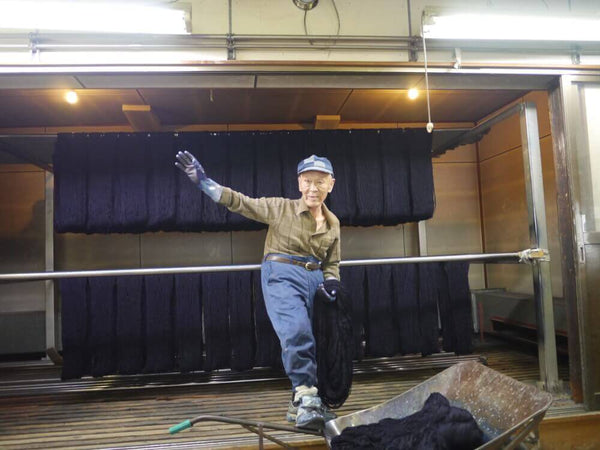
The elder of the Nogawa workshop (Aizome), more than 60 years of experience
Relocation of production in a global world.
As in any profitable sector, the lure of profit is ever present, and with it, relocation, but I do not think that the fault entirely lies on those driving those relocations.
As in France - and even in a country where Judo is the equivalent of soccer, more than in France - Japanese people getting into martial arts do not to want to pay the hefty price of a "Made in Japan" equipment. If it seems feasible for an art such as Judo, Aikido or Karate, it is unconceivable for something like Kendo where no parent in their right mind would buy a 3000€ armor for a child who would only wear it for 2 to 3 years. Considering that the vast majority of practitioners are children and beginners, the cheap "Made in China" and the even cheaper "Made in Pakistan" products are now the norm.
Depending on the brand, the markup on "Made in Japan" products is 25 to 50%, whereas it can reach 80% on "Made in China/Pakistan" products. Let’s just say that when it comes to the bottom-line, companies face an easy choice.
And meanwhile, China has made significant progress for the quality of their production these past few years, making it even harder for people to spend 2 to 3 times the price on an item that doesn’t have a clear and immediate advantage over its competitor.
This is unfortunate, and thus for three reasons. The first one, albeit suggestive but hopefully shared amongst traditional budo/bujutsu practitioners, is the preservation of tradition. The second one, a lot more unbiased and that is starting to make its way to France, is the preservation of employment in the country. The inner workings are intricate, but the result is quite simple: the more we import, the more we weaken the economy of our own country, and snowball to weakening our own personal financial situation.
The third one is that by opening the market to China, we expose ourselves to the slew of problems that have plagued other sectors of industry: weak quality control, products sometimes dangerous, counterfeiting, etc.
A permissive framework with no adequate legislation
Nevertheless, buying power in Japan is still relatively high and many people are still interested in "Made in Japan". Unfortunately, the super permissive legal framework of Japan’s law on the matter renders informations available to consumers quite illegible. There are no anti-dumping law, no law against below-cost selling, no law restricting sales and discounts and, of course, no law to protect tradition.
And if only for those, the market might be able to regulate itself, but the worse is that no protection is granted to the "Made in Japan" label. To give you an example, you could manufacture Kendo gloves in China, add laces on it in Japan and label them "Made in Japan"- it’s all perfectly legal.
No accurate numbers are available, but I do think that in the martial art equipment sector, more than half of "Made in Japan" products are, in fact, mostly produced overseas. I’m even firmly convinced that no more than 10 to 20% of those product are truly and entirely manufactured in Japan.
This framework is an opportunity for unscrupulous companies looking to maximize their profits. Low wages, overwork, below-cost pricing, fake "Made in Japan", buyout and liquidation of the competition, layoffs, etc., all supported by clever communication and marketing. In short, the worst trade has to offer, as in any other sector of business.
And if not lured by profit, it is done out of necessity. When a business is pushed by competition to slash its prices to the destruction of its business model and end up with its back against the wall, it might end up selling "Made in China" in bulks and without mentioning the source of its products just to avoid layoffs (in Japan, businesses often take on a family role and more traditional companies are very protective of their employees).
But despite Japanese law being problematic, changing it wouldn’t be enough to solve the current situation entirely. Indeed, it wouldn’t change anything to the way business is handled outside of Japan, including in France where some storefront boast of "Japanese quality" that is nothing more than slightly better "Made in China".
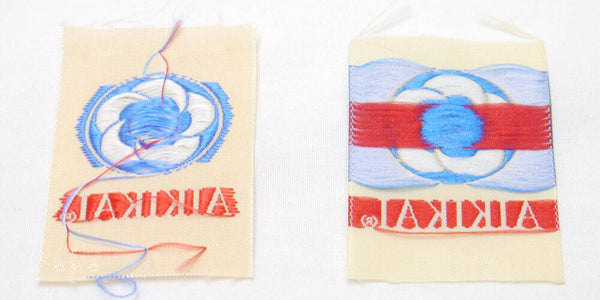
On the left, the real Aikikai label. On the right, a fake label that can be found both in Japan and overseas.
Business practices unfit for the 21st century.
It is common practice in this industry, and has been for as long as it exists, to provide the least possible amount of information about the products we make or sell. Aside from making life easier, I honestly have a hard time getting my head around this state of affairs. It came to be the first big obstacle when I started my business. My education is scientific by nature and I tend to enjoy technical specifications: I appreciate clarity and precision, and for performance to be clearly stated so that deficiencies in the final products can be reported to the manufacturer and seller. Of course a more traditional production line cannot be uniform, which tends to make documentation work a bit more arduous, but I was convinced that it was possible to do more than nothing, and I feel like we have reached a satisfying state that allows our customers to have relatively accurate informations. But aside from the difficulty to gather those accurate informations, I went against many craftsmen, manufacturers and competitors who blamed me for my approach, and my work and retail practices. Thankfully, a few friends in the industry shared my point of view, and it was a challenge for them as well to be accurate and precise on their own catalogs.
Despite Japanese being used to this situation, it is of utmost importance in order to sell worldwide to be able to inform better, not only on the technical aspect (with things such as sizes and ratings tables), but also about the nature and provenance of the materials used in manufacturing as westerners are usually very concerned by this kind of information and appreciate their presence.
In the end, selling products that we know nearly nothing about amounts to not knowing what we’re selling at all. It reflects an image of selling for the sake of selling, with no love for the profession nor the product, and though it can probably work in a monopolistic context, it makes it impossible to promote Japanese tradition while knowing nothing about it, and doing so makes it impossible to explain exactly why it is preferable to buy a Japanese Dogi rather than Chinese or Pakistani one.
A difficult opening to the west for a nationalist circle
The last factor in my opinion is the lack of internationalization of Japanese people as a whole. Due to their education geared toward insularity, the average Japanese lacks in language skills, making it difficult for trade to open worldwide. This means that intermediaries who will apply a markup are required, raising prices and widening the gap with "Made in China" products.
But it actually goes much deeper. Japanese have obvious differences in morphology and needs than those of foreigners. And yet, Japanese traditional companies and craftsmen are very reluctant to cater their products to those needs "It’s always been done that way, why would we change for foreigners?" And yes, the phrasing is offensive, and that’s where we get to the "nationalist" part.
I wouldn't call it racism, seeing as Japanese racism is more due to a lack of education (ignorance) rather than real hatred. However, a strong nationalist sentiment, a sense of self-sufficiency and a denial of the benefits of cross-cultural exchange is indeed present. It gets even trickier in the case of a foreigner trying to explain these matters to a Japanese (though objectively, a foreigner is better suited to point out these kinds of designs flaws in the equipment on offer).
Of course mentalities are changing, and supporting this process is the duty of foreigners working in the industry, but for the time being it is what it is, and it might already be too late to push for a deeper change.
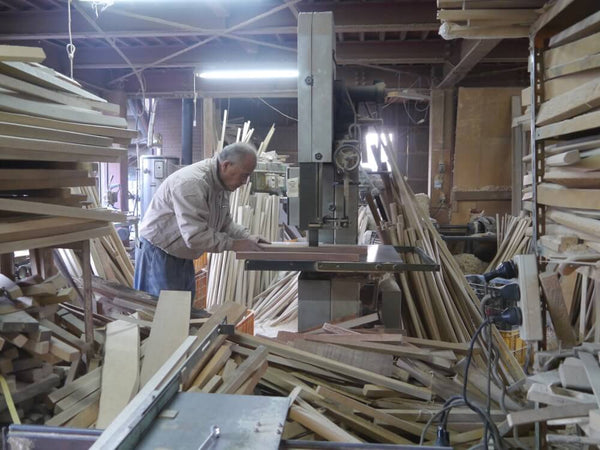
Master Nidome, one of the most open-minded craftsmen we have had the luck to work with.
Making allowances
As a famous French comedian and philosopher put it, "If only people didn’t buy it, then it wouldn’t sell!": As we have already established, the "Made in China/Pakistan" only sells because there is a demand for those low-cost products. But it is also due to the fact that most have no idea what they’re buying, and do not pro-actively investigate on that matter (which also apply to some retailers who despite their honesty, simply have no knowledge of what they sell).
Let’s be clear: a 500€ "Made in Japan" Kendo armor doesn’t exist.
100€ for a "Made in Japan" Dogi or Hakama VAT and importation costs included, in France, is impossible.
A 200€ "Made in Japan" Iaito doesn’t exist, etc.
But of course, it’s not all that bleak. Some Japanese companies still go the extra mile to offer real "Made in Japan" products, despite the financial and organizational cost. Only a few brands only offer Made in Japan hardware (I only know of Iwata and Seido), but others, such as KuSakura, Tokyodo, Tokaido, etc. remain honest, displaying the exact origin of their products. Alliances are made, private organizations for the protection of craftsmanship are being created, and more and more people in the industry are concerned by the disappearance of some traditions. That said, as of now I wouldn’t be able to tell which one of tradition and ultra-capitalism will survive.
Though I do hope that this article gave you a better understanding of the situation and a broader view of what is at stake when doing something as simple as buying your equipment, I unfortunately have no solution to offer. Importation to France is expensive, Japanese gear is expensive, production is limited and sometimes causes long waiting lines.
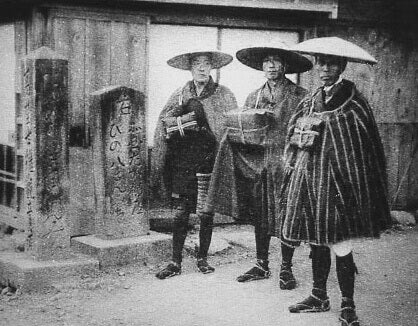
Shopkeeper from the Edo period Source.
Trade in the Japanese caste system
Contrary to the image of Japan promoted by some, Japanese merchants are traditionally looked down upon by society. Indeed, in the Edo period caste system (which has more moral than legal value), merchants are found at the bottom of the ladder, just above "pariahs" Above them are craftsmen, peasants, and then samuraïs and daimyos. Putting aside nobility, this philosophy tend to put forward those who create, such as peasants, then those who transform, like craftsmen, and finally those who make their living out of someone else’s work, the merchants. In reality, the system only had moral grounds, and rich merchants enjoyed a comfortable social status nevertheless. But that said, for practitioners of martial arts, whose philosophy has been mostly established during the Edo period, it is important to understand that tradesmen are only tolerated because of their indispensable nature.
Without over-dramatizing, it would be beneficial if merchants kept in mind that they do make their living out of someone else’s, and that it would only be normal for creators and transformers (in our field, manufacturers) to earn more than traders.
This article is an enhanced version of the article first published in Magazine Dragon Spécial Aikido HS N°6 (winter 2014) by Jordy Delage.


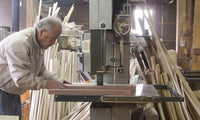
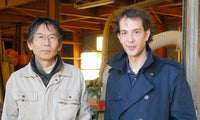


3 comments - Martial arts equipment: Is Japanese craftsmanship in danger?
Thank you for your comment Santiago,
Yes, that’s a good point. Passing on well maintained gears to the next generation is a very important thing!
All the best at the Dojo.
Hello! Thank you for bringing us such an article that is bound to impact us all about what is to come if some consumer patterns are not adjusted.
As martial artists we learn how to maintain and preserve gear and equipment to last for years. Regrettably some of these principles erode one of the basic tenets of market: demand.
I personally have been advocating for the passing of bogu and gear down to next generation of practitioners where these products are scarce or unaffordable. Also donating shinai will help all.
Hopefully we will change cponsumers’ pattern before it is too late.
Respectfully,
Santiago B. Tejada
Thanks for your continuing to keep us informed about the evolution of the martial arts supplies industry,
Peter